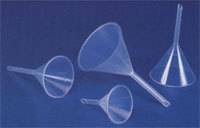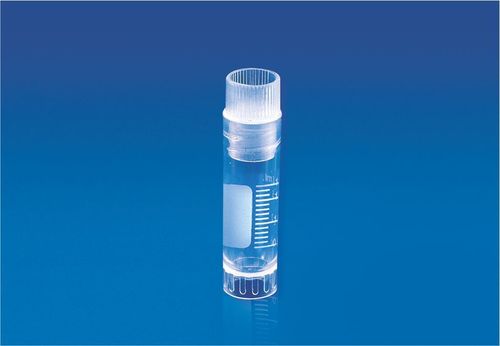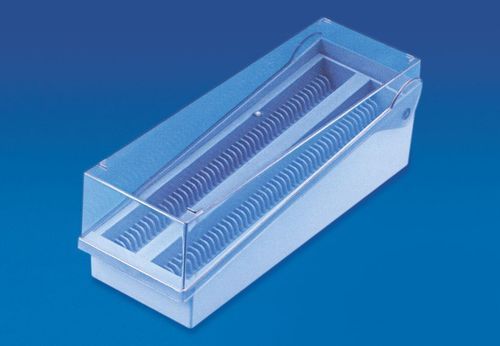FUNNELS - LONG STEM
FUNNELS - LONG STEM Specification
- Shape
- Conical with long cylindrical stem
- Control Type
- Manual
- Temperature Resistance
- Up to 500C
- Features
- Long stem for precise pouring; chemical resistance; autoclavable
- Glass Type
- Borosilicate
- Display Type
- None
- Power Supply
- Not Required
- Type
- Long Stem Funnel
- Dimension (L*W*H)
- 50 mm diameter, stem length 150 mm
- Equipment Type
- Laboratory Glassware
- Equipment Materials
- Borosilicate Glass
- Material
- Glass
- Application
- Laboratory liquid transfers, filtration
About FUNNELS - LONG STEM
| FUNNELS - LONG STEM | |||||||||||||||
| These long stem funnels have smooth wall, 60 deg C cone angle and external ribs to prevent air lock. Moulded in Polypropylene, these clear funnels can also be steam autoclaved.
|
Precision Laboratory Transfers
The long stem funnel offers exact control when pouring or filtering liquids, thanks to its extended stem and conical design. This ensures minimal spillage, making it ideal for precise laboratory applications involving acids, solvents, or other reagents. Its borosilicate glass construction provides outstanding clarity and chemical resistance, supporting efficient, reliable laboratory workflows.
Durability and Safety Assured
Made from borosilicate glass, this funnel withstands high temperatures up to 500C and is resistant to various chemicals, including acids and solvents. Its ability to be autoclaved enables repeated sterilization, guaranteeing a hygienic and safe laboratory environment with every use. The transparency of the glass aids in closely monitoring fluid levels during operations.
Designed for Easy Maintenance
This funnel is designed for effortless cleaning and reuse. Its glass surface is smooth and non-porous, ensuring contaminants and residues do not adhere easily. Simply wash, rinse, and sterilize as needed for ongoing laboratory reliability, making it a cost-effective tool for frequent liquid transfer and filtration tasks.
FAQs of FUNNELS - LONG STEM:
Q: How should the long stem funnel be cleaned and sterilized after laboratory use?
A: The funnel is easy to clean due to its glass surface. Simply wash it with a suitable laboratory detergent, rinse thoroughly with distilled water, and it can be safely sterilized in an autoclave because it is autoclavable. Regular cleaning ensures contaminant-free usage for all laboratory tasks.Q: What types of chemicals are compatible with this borosilicate glass funnel?
A: This funnel is made of high-quality borosilicate glass, ensuring excellent resistance to a wide range of chemicals, including most acids and solvents commonly used in scientific laboratories. Always verify compatibility with specific reagents before use to ensure maximum safety.Q: When is the long stem funnel particularly beneficial in laboratory procedures?
A: The long stem funnel is especially useful during precise liquid transfers and filtration where controlled pouring is essential. Its extended stem reaches deeper into containers, minimizing spillage and supporting accurate transfers, particularly with volatile or hazardous chemicals.Q: Where can this funnel be used within a laboratory setup?
A: This funnel is suitable for use in a variety of laboratory environments across India, including educational, research, chemical, and industrial labs, wherever liquid handling, transfer, or filtration of solutions is needed.Q: What are the benefits of choosing a transparent, borosilicate glass long stem funnel?
A: Choosing a transparent borosilicate glass funnel offers high visibility for monitoring liquid flow and levels, along with robust resistance to thermal shock, acids, and solvents. Its durability and reusability make it a cost-effective and reliable laboratory tool.Q: How does the design of the funnel aid in precise liquid pouring?
A: The conical shape combined with an extra-long cylindrical stem (150 mm) allows for controlled, targeted dispensing of liquids, reducing the risk of spills and improving accuracy during laboratory transfers or filtration tasks.Q: What is the typical process for using this funnel in a liquid transfer or filtration application?
A: Place the funnel above the receiving container, ensuring the stem sits securely. Pour the liquid into the funnel, allowing it to flow smoothly through the long stem. For filtration, fit filter paper into the conical section before pouring. The funnels design promotes steady, precise liquid movement with minimal risk of overflow.

Price:
- 50
- 100
- 200
- 250
- 500
- 1000+
More Products in POLYLAB PLASTICWARE Category
CRYO VIAL-INTERNAL THREAD
Material : Virgin Polypropylene
Shape : Cylindrical vial
Equipment Materials : Polypropylene (PP)
Application : Cryogenic storage of biological samples
SLIDE STORAGE RACK
Material : SS 304 / Mild Steel with powder coating
Shape : Rectangular
Equipment Materials : Stainless Steel
Application : Storing and organizing microscope slides safely
Temperature Resistance : Ambient temperature
Type : Other, Slide Storage Rack
UNIVERSAL MULTI RACK
Material : Mild Steel
Shape : Rectangular
Equipment Materials : Powder coated mild steel (MS)
Application : Laboratory Glassware Storage, Drying, and Test Tube Organization
Temperature Resistance : Resistant to laboratory temperature ranges
Type : Other, UNIVERSAL MULTI RACK
Membrane Filter Holder 47 mm
Material : Glass and stainless steel
Shape : Cylindrical
Equipment Materials : Borosilicate glass and stainless steel
Application : Used for filtering liquids and gases in laboratory and industrial applications
Temperature Resistance : Hightemperature resistance (specific temperature range not provided)
Type : Liquid and gas filter, Other
GST : 06ACOPS0805K1ZD
|
 |
SINGHLA SCIENTIFIC INDUSTRIES
All Rights Reserved.(Terms of Use) Developed and Managed by Infocom Network Private Limited. |


 Send Inquiry
Send Inquiry





